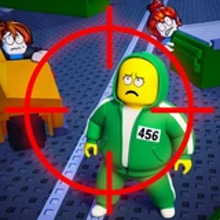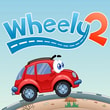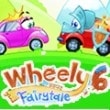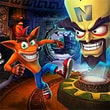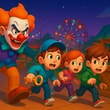🎯 Red dots, fast feet, louder heart The first laser glints across the floor and your brain goes very quiet. Obby 456: Survive The Sniper in Squid Game is not about luck. It is about reading danger, picking lines, and trusting your timing when a red dot crawls toward your shoes. Platforms tilt, barrels hiss, and a distant scope breathes somewhere above you. You move because stillness is an invitation. Sprint, stop, slide behind cover, and count your next steps like a rhythm you can feel in your chest.
🧱 The map speaks in angles Every stage is a small puzzle dressed as chaos. You will see crates that create diagonal shadows, fences that break sight at knee height, and statues that are not decoration but lifelines. The trick is learning how angles erase you. If the sniper cannot see your center, you are safe enough to breathe. Tilt the camera to check sightlines, trace a route that touches cover every few meters, then commit. The level is honest. It warns you with color, sound, and line of sight. When you die, you know why.
💥 Traps that punish greed and reward rhythm Explosive barrels love impatience. If you run straight, they turn your plan into confetti. If you time your pass, they become tools that clear drones or knock loose an obstacle. Spring platforms are not just jumps. They are metronomes that ask for a beat of patience so the next launch lines up with a window in the sniper’s cycle. Falling tiles teach a polite lesson. Touch, push off, never linger. The fastest players are not the ones who hold sprint. They are the ones who never waste a step.
🕶️ The sniper’s language The scope tells the truth if you listen. A faint whine grows when the rifle is ready. The laser breath steadies just before a shot. After the crack, there is always a recovery moment that belongs to you. That is your invitation to cross open ground. If you are caught in the beam, do not zigzag wildly. Change speed once, cut a clean angle behind cover, and the shot will miss because you gave the math a rude surprise. Learn the cadence, and levels feel fair rather than cruel.
🚧 Parkour that feels earned Movement is simple and sharp. Short jumps give control, long jumps carry risk and speed. Sliding into cover cancels just enough momentum to save you from overstepping a safe pocket. Ledges accept late grabs, so a single extra frame of hangtime turns panic into style. You will build tiny rituals. Two steps, jump, land center, breathe, peek, dash. The best runs look smooth because you stopped arguing with the map and started writing on it.
🗝️ Micro decisions that decide the round Do you clear the left lane with a barrel chain or thread the right lane through low cover and save time for the last sprint. Do you risk a high platform for a straight shot to the checkpoint or stay low and trade distance for safety. These choices feel small until they are not. The timer ticks, the laser hunts, and your habit of counting to three before a big move becomes a superpower. The game rewards that kind of restraint.
🎭 The flip at the finish Cross the line and the entire mood rotates. You become the sniper. Targets pour into the arena with the same hunger you felt thirty seconds ago. The rifle is not a toy. It punishes predictable lines and misses greedy dashes that discover cover too late. You learn to watch groups, not single runners. Pick the one who threatens the cleanest route, then place a shot a step ahead of where they will be. Lead, do not chase. When a runner uses cover well, nod at the screen. You taught them by being good.
🧠 Mind games on both sides As a runner, fake a start to pull the trigger early, then move on the reload. As a sniper, hold your fire to create fear that slows the pack. As a runner, stop just before cover so the predicted shot whistles past, then slide in clean. As a sniper, aim at exits rather than entries so runners meet your shot while accelerating. This back and forth is the soul of the game. It makes every round feel like a small story told in moves and counters.
🧨 Stage flavor and Squid mood The atmosphere borrows the series energy without needing the license to shout about it. Color pops against concrete. Sirens nudge tension. A whistle signals start. Silence falls like a curtain before a perfect shot. You can almost smell dust and cordite in the quiet after an explosion. The visual language is bright and readable, which matters when milliseconds matter more than monologues.
📱 Controls that vanish, feedback that teaches Move, jump, slide, interact. That is enough. Inputs respond before your doubt finishes forming. Miss a jump and the camera tells you which toe failed. Take a hit and the soundscape explains the mistake in a single heartbeat. The UI marks safe pockets clearly and checkpoints feel generous without erasing the thrill. The experience is tuned for quick drops into browser sessions and long evenings on repeat.
💡 Small tips with big payoff Keep your camera low when leaving cover so your body stays hidden longer than your head. Count the sniper rhythm, then move on the second beat rather than the first to avoid bait shots. Use exploded barrels as smoke to cross lanes, even if they do not fully block vision. Land in the middle of platforms to prevent slip deaths when a shot grazes your stride. When you become the sniper, ignore flashy jumps and delete the runners who take disciplined lines. They are the ones that win lobbies.
🏆 Why you keep queuing Improvement is visible. You learn to route stages, to read lasers, to run calm, to shoot patient. Your first clear feels like luck. Your next five feel like understanding. The flip mechanic keeps the loop fresh because mastering both sides multiplies the satisfaction. One more run is not a promise. It is a reflex.
 Squid Game 3: M
Squid Game 3: M









